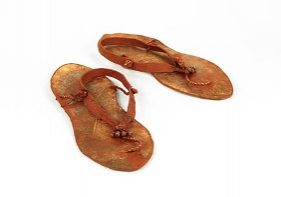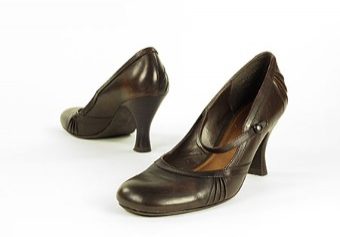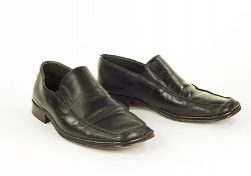The Perfect Shoes
Svetlana Keren Gorzhaltsan
Summary:
These are “valenki” – traditional Russian footwear. Very practical and warm, until recently, they were popular in Russia’s colder regions. As a graduate engineer sent to work in a fish factory in remote Kamchatka, my dad had to sacrifice his newly-bought leather business shoes for valenki for five long winters between 1953 and 1958. Plain, black and knee-high, but not elegant, they kept him warm in the harsh northern climate. (Collection of the Bata Shoe Museum)
Story:
When I took them out of the bag, I almost died laughing. A pair of the ugliest shoes I’d ever seen was neatly wrapped in several pages of an old newspaper. Called valenki, these are the footwear of the distant Russian north. They were made of the stiffest black felt with nothing else added. Practical in the frigid Siberian climate, they were so ugly that I wouldn’t be caught dead in them—even in Siberia, I thought. Hearing my laughter, my dad walked into the room where I sat, holding the valenki and wiping my tears.
“Is that a pair of valenki!?” he asked.
“Yes,” I replied, “Rita sent them. I think they’re the ugliest shoes I’ve ever seen.”
“Ahh…” My dad sighed, taking one of the boots from my hand. “I have a story about valenki for you.” And so, the story began.
“It was back in the year 1953,” he stated. “I had just received my diploma, and to celebrate, I went and bought myself an expensive suit and a pair of stylish, black lacquered shoes to go with it. That’s how a young engineer is supposed to look, I thought. At the time, along with the diploma, every graduate received a job placement that wasn’t negotiable. After graduation, you just had to be ready to go to any place they sent you and work there for five years. It could be any city or town of our huge country. I was unfortunate enough to be directed to the biggest fish factory of Kamchatka, which is to the east of Alaska. So, I packed my suitcase and went to spend five years of my life in an outpost of Russia. “
“I was assigned to the biggest factory in the area, which happened to be located in the tiniest, most desolate town you can imagine. Besides the factory and a post office, a grocery store and the barracks housing the workers—there was absolutely nothing there. The climate was too harsh. It was cold and snowy for half a year, and everyone wore heavy sheepskin coats and valenki to stay warm. The rest of the year, there was so much rain that the roads turned into swamps, and one could not get around without waders.”
“A year passed, and I still had no chance to show off my fancy suit and the shoes that I had brought with me from the city. One day, three of my roommates and I received an invitation to a New Year party in a neighbouring town. The town was bigger than the rural community of our fish factory, and I was looking forward to the opportunity to dress up and dance with pretty girls.”
“So, the day arrived, and the four of us headed to the party. The only transportation at that time of the year was a dogsled. We had two of them for the four of us, two guys on each. I happened to be on the first one. Sitting at the back of our sled—with a heavy sheepskin over my fancy suit—I was looking at the rows of electrical posts, only the tops (about one-metre tall) of which were sticking out of the thick snow. Man! The ground was so deep down beneath the snow!”
“Somewhere midway, I touched the bag containing my fancy, lacquered shoes and—to my horror—I realized that the left one was missing! I imagined myself in the middle of a dance floor with my trousers tucked in ugly, knee-high, felt valenki, and I understood that the evening I had been looking forward to was ruined before it had even begun. In utmost disappointment, I took the remaining right shoe and tossed it far into the deep snow.”
“But I felt even greater disappointment afterwards when the guys who followed us on the second dogsled brought me my left shoe! They had found it in the snowy track! I spent the entire evening sitting quietly in the corner and watching my friends having a good time. Gloomy as could be, I barely made it to the end of the party, put on my sheepskin coat and headed home.”
“And that’s the end of the story, my dear,” my father declared.
“And what did you do with the left shoe?” I asked.
“It shared the fate of the right one,” he answered. “I threw it away on the way back. A single shoe is good for nothing, right?”
“Right…,” I said, picturing a pair of brand-new fancy shoes, side by side in the deep snow of the faraway land of Kamchatka.
SVETLANA KEREN GORZHALTSAN: A native of Russia, Svetlana lived in Jerusalem before immigrating to Canada in 1998. She currently works as a visual artist and a visual art teacher in Toronto.
Read Other Stories from this Author
Verka the Lame
In a crowded Russian apartment block, Svetlana Gorzhaltsan and her friends make their fun by tormenting Verka...











